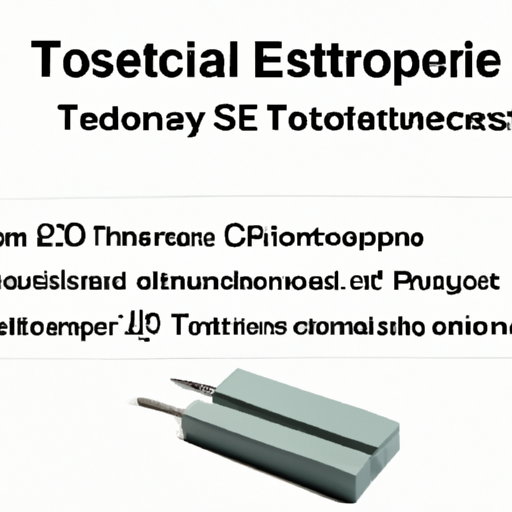

Photoelectric transistors are a type of semiconductor device that convert light energy into electrical signals. They are commonly used in various applications such as light sensors, optical communication systems, and photovoltaic cells. In this article, we will discuss the latest specifications of photoelectric transistors and their importance in modern technology.

Another important specification of a photoelectric transistor is its speed of response. This is typically measured in terms of the device's rise time and fall time, which are the time it takes for the output signal to reach a certain percentage of its maximum value in response to a change in light intensity. Faster response times are desirable in applications where rapid changes in light intensity need to be detected, such as in optical communication systems.
The spectral response of a photoelectric transistor is also an important specification to consider. This refers to the range of wavelengths of light that the device can detect. Different photoelectric transistors have different spectral responses, depending on the materials used in their construction. Some transistors are sensitive to a broad range of wavelengths, while others are designed to be sensitive to specific wavelengths, such as infrared or ultraviolet light.
The noise characteristics of a photoelectric transistor are another important specification to consider. Noise can degrade the signal-to-noise ratio of the device, affecting its ability to accurately detect light signals. Manufacturers are constantly working to reduce the noise levels of photoelectric transistors through improved design and manufacturing processes.
The power consumption of a photoelectric transistor is also an important specification to consider, especially in battery-powered devices. Lower power consumption means longer battery life, which is important in applications where the device needs to operate for extended periods without recharging. Manufacturers are constantly working to reduce the power consumption of photoelectric transistors through the use of more efficient materials and design techniques.
In addition to these specifications, there are other factors to consider when choosing a photoelectric transistor, such as its size, cost, and reliability. Manufacturers are constantly working to improve these aspects of photoelectric transistors to make them more versatile and cost-effective for a wide range of applications.
In conclusion, photoelectric transistors play a crucial role in modern technology, enabling the conversion of light energy into electrical signals for a variety of applications. Manufacturers are constantly working to improve the specifications of photoelectric transistors to make them more sensitive, faster, and more efficient. By staying up-to-date on the latest developments in photoelectric transistor technology, engineers and designers can choose the best devices for their specific applications.
Photoelectric transistors are a type of semiconductor device that convert light energy into electrical signals. They are commonly used in various applications such as light sensors, optical communication systems, and photovoltaic cells. In this article, we will discuss the latest specifications of photoelectric transistors and their importance in modern technology.

Another important specification of a photoelectric transistor is its speed of response. This is typically measured in terms of the device's rise time and fall time, which are the time it takes for the output signal to reach a certain percentage of its maximum value in response to a change in light intensity. Faster response times are desirable in applications where rapid changes in light intensity need to be detected, such as in optical communication systems.
The spectral response of a photoelectric transistor is also an important specification to consider. This refers to the range of wavelengths of light that the device can detect. Different photoelectric transistors have different spectral responses, depending on the materials used in their construction. Some transistors are sensitive to a broad range of wavelengths, while others are designed to be sensitive to specific wavelengths, such as infrared or ultraviolet light.
The noise characteristics of a photoelectric transistor are another important specification to consider. Noise can degrade the signal-to-noise ratio of the device, affecting its ability to accurately detect light signals. Manufacturers are constantly working to reduce the noise levels of photoelectric transistors through improved design and manufacturing processes.
The power consumption of a photoelectric transistor is also an important specification to consider, especially in battery-powered devices. Lower power consumption means longer battery life, which is important in applications where the device needs to operate for extended periods without recharging. Manufacturers are constantly working to reduce the power consumption of photoelectric transistors through the use of more efficient materials and design techniques.
In addition to these specifications, there are other factors to consider when choosing a photoelectric transistor, such as its size, cost, and reliability. Manufacturers are constantly working to improve these aspects of photoelectric transistors to make them more versatile and cost-effective for a wide range of applications.
In conclusion, photoelectric transistors play a crucial role in modern technology, enabling the conversion of light energy into electrical signals for a variety of applications. Manufacturers are constantly working to improve the specifications of photoelectric transistors to make them more sensitive, faster, and more efficient. By staying up-to-date on the latest developments in photoelectric transistor technology, engineers and designers can choose the best devices for their specific applications.